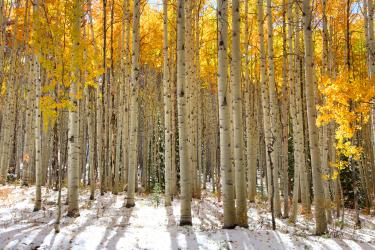What Is a Young Forest?
Young forests are landscapes where new life is taking hold.
That new life springs up after a disturbance, which could be caused by nature—as in a flood or fire—or by people, as in a timber harvest. Whatever its cause, the disturbance clears away mature trees and gives rise to a rich tapestry of young trees, shrubs, wildflowers and grasses.
There are a few different types of young forest:
Old farm fields were once used for pasture, orchards or crops. When abandoned, these fertile lands turn into young forests as shrubs and saplings begin to grow there.
Shrub swamps are usually found alongside slow-moving rivers and streams that have been dammed by beavers. Once the beavers move on, the beaver ponds turn into meadows and then into shrub swamps, which can feature blueberry, dogwoods, alder and other wetland shrubs.
Pine barrens are a rare and vital young forest habitat where sandy soils support blueberry and scrub oak, scattered pitch pines and a rich variety of plants and animals found nowhere else. They need fire, and historically were maintained by fires caused by lightning or set by Native American tribes.
Aspen-birch forests historically grew up after wildfires or floods, when the lightweight seeds of aspen and birch were carried in by wind or water. Now these striking, white-barked habitats are usually renewed by timber harvesting.
No matter their type, these young forests only last about 10 to 20 years, until the trees grow into closed-canopy forest—and that’s the reason why they’re in short supply. These landscapes were once maintained by repeated fires, pest infestations, and other disturbances, but these disturbances are now suppressed to protect people’s homes and properties. That means young forests are lost as they grow into closed-canopy forests, or are developed for housing and other uses.
To keep young forests around for the wildlife that need them, woodland owners must actively create them. Why do that? Because young forests play an important role in keeping your woods and wildlife healthy.
How can I get more tips?
It’s simple! Enter your email below.

